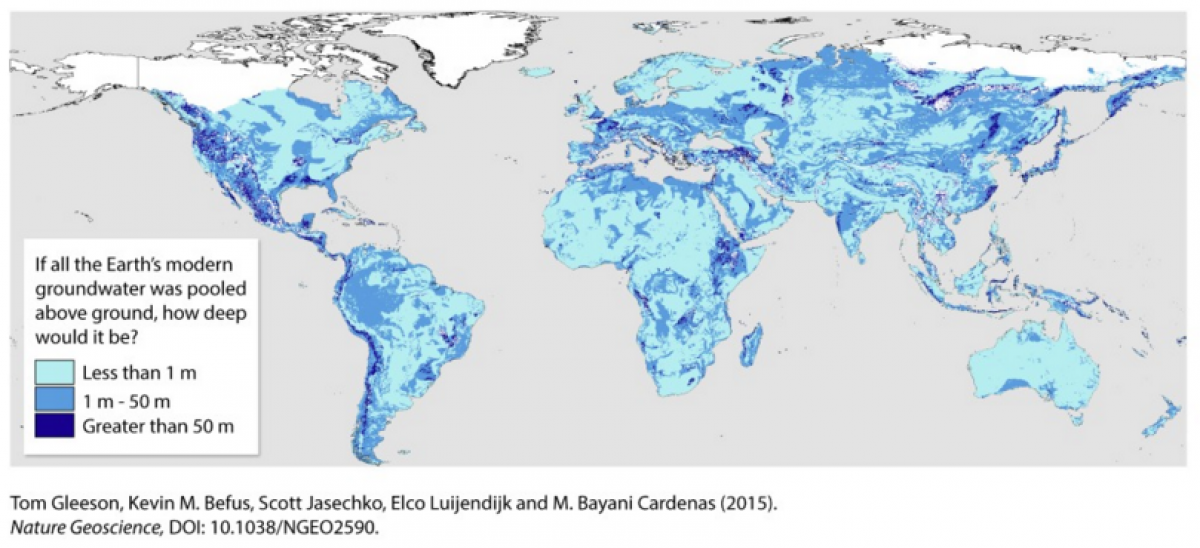
Most people hadn't given the notion of groundwater a second thought until this past summer, when a drought ravaged the American West and created a groundwater crises. Groundwater was being pumped out of the Earth in parts of California's Central Valley far faster than it could possibly be replenished, causing the ground to literally sink into emptying aquifers, lowering the land by a several inches to a foot a year in some places.
But this is hardly just California's problem—nor is it remotely contained to just the past few years. Groundwater in several places is being used faster than it can be replenished. In a new study, an international team of researchers mined geochemical, geologic, hydrologic and geospatial data sets with numerical simulations of groundwater to determine how much usable groundwater is left on Earth.

As it turns out, there are about 22.6 million cubic kilometers—or roughly 6 quintillion (6,000,000,000,000,000,000) gallons—of groundwater spread out across the globe. But the vast majority of it is too far underground to be useful to humans. The researchers found that less than 6 percent and possibly as little as 1 percent of the groundwater is close enough to the Earth's surface to be readily useful to humans for drinking and agriculture. That water is considered "modern" groundwater, because it's less than 50 years old. Despite this being only a sliver of the total, if all the modern groundwater were spread on the surface like a flood, it would cover every continent in nearly 10 feet of water.
"This has never been known before," lead study author Tom Gleeson, of the University of Victoria in British Columbia, said in a statement. "We already know that water levels in lots of aquifers are dropping. We're using our groundwater resources too fast—faster than they're being renewed."
That layer of "modern" groundwater is also the most affected by changes in climate, and by contamination by human activity. "So, it's a vital resource that we need to manage better," Gleeson told the BBC.
For their next endeavor, Gleeson and his team plans to apply these new figures to measure what the long-term implications are of humanity's water use.
"Since we now know how much groundwater is being depleted and how much there is, we will be able to estimate how long until we run out," Gleeson said.
Uncommon Knowledge
Newsweek is committed to challenging conventional wisdom and finding connections in the search for common ground.
Newsweek is committed to challenging conventional wisdom and finding connections in the search for common ground.
About the writer
Zoë is a senior writer at Newsweek. She covers science, the environment, and human health. She has written for a ... Read more
To read how Newsweek uses AI as a newsroom tool, Click here.








